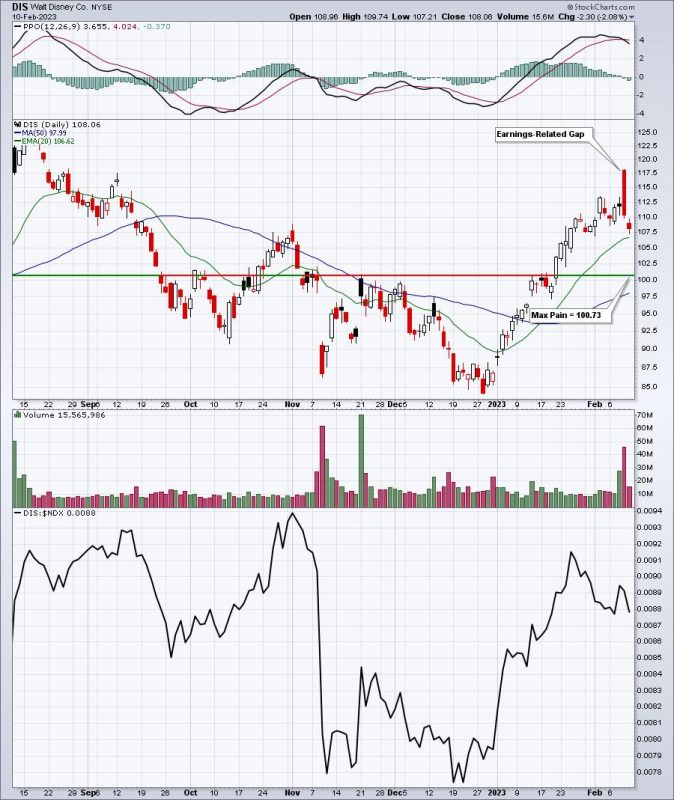Monthly options expiration creates a whole new set of headaches for retail traders. As if trading wasn’t already hard enough, throw in the short-term financial incentive for market makers to “manipulate” prices and cash in big time at options expiration, and you have a recipe for significant volatility. So let’s combine options expiration and the Walt Disney (DIS) quarterly earnings report and I think you’ll understand where I’m coming from. Earnings blew away estimates, $.99 vs. $.69. Quarterly revenues also sailed past expectations, $23.51 billion vs. $23.34 billion. Not too surprisingly, DIS gapped higher and opened at 118.04 on Thursday morning, the day after it reported earnings. That was from its prior close of 111.78. DIS closed on Friday at 108.06, roughly 10 bucks beneath that Thursday morning open:
I don’t know if DIS makes it all the way back to 100.73, but I do know that our directional clue is lower. Trading, to me, if all about managing risk. Traders MUST be aware that buying DIS at Thursday’s open is a HUGE mistake, whether DIS goes down or not. DIS could have continued climbing, but it wasn’t worth the risk!
When everyone buys after solid fundamental news, market makers provide the liquidity necessary on the short side, selling into that buying. One thing I can guarantee you (and I don’t guarantee very much) is that market makers will take advantage of retail traders to make inordinate amounts of money. That’s the way the system is set up, so we either use it to our advantage or lose our capital. It’s our choice. What most traders don’t realize, however, is that Disney’s “max pain” level for February is currently just above 100.00. So when DIS opened on Thursday morning at 118, there was roughly $134.7 million of net in-the-money call premium that market makers would owe at this Friday’s close (February 17th – the 3rd Friday of every month is options-expiration Friday for monthly options). By the close this past Friday, however, that liability had shrunk to $70.6 million. Market makers have saved $64 million in net options premium on DIS and, if prices actually drop to 100.73, the point of DIS max pain, that savings will grow another $18 million.
You absolutely must be aware of the monthly options impact on short-term price direction.
Monthly options expiration analysis is one part of our risk management strategies at EarningsBeats.com. Understand the system and improve your trading success. It’s important to be willing to continually learn about the stock market. We review max pain for all 30 Dow Jones stocks, all 100 NASDAQ 100 stocks, and all of our portfolio stocks. If you’d like directional clues for 142 stocks for next week, CLICK HERE!
Happy trading!
Tom








